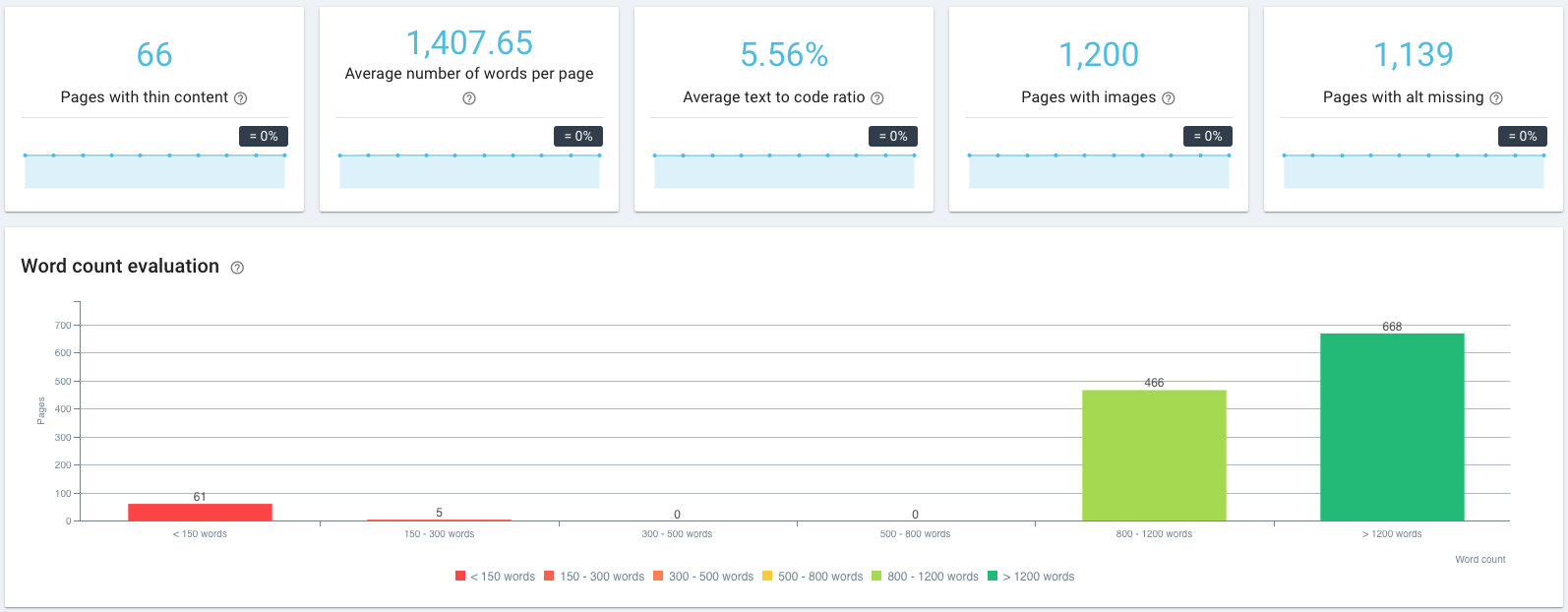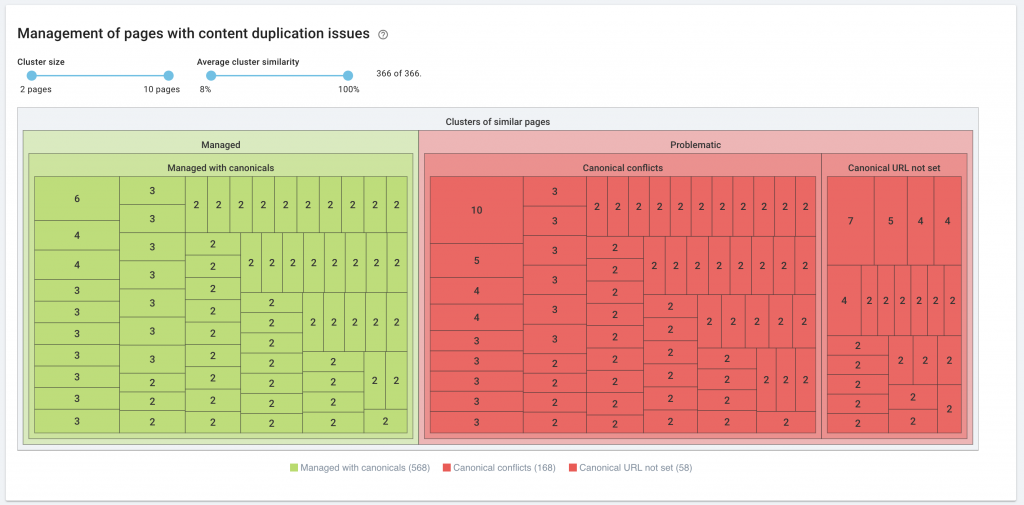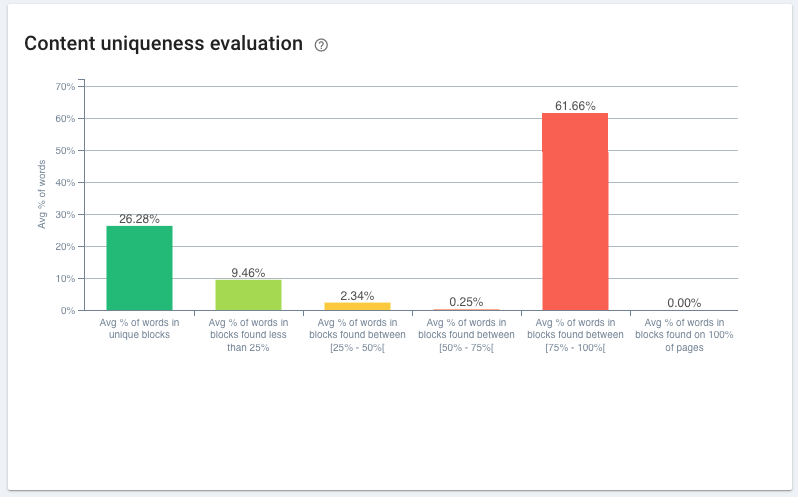Disclosure: brace yourself and take a deep breath because there is no reason to panic
Google search engine’s algorithm receives updates around 500 or 600 times EACH year. While most of them are really slight and have no impact or don’t get any coverage by SEOs, there are a few major updates rolled out each year that may positively or negatively influence a website’s rankings and shake the search industry. Each time, there’s plenty of speculation going on around those updates and so-called experts share their recommendations to face drops in rankings – and very often it’s complete nonsense.
In most cases, there is no need to overreact. So relax, take a seat and follow our guide to make the right decisions.
Brief reminder: What is a Google algorithm?
To summarize, Google search engine relies on a complex algorithm system whose job is to data from its search index to deliver the best results for a particular query. Google combines different algorithms and ranking factors to order website pages by relevance on the search engine results pages. But explaining in detail how Google algorithms work is a completely different subject and if you want to get your hands on technical articles, I would highly recommend Bill Slawski’s blog, SEO by the sea. At the same time, Moz has compiled a detailed timeline of major Google updates since 2000 (and they’re not the only ones to do so) and you’ll notice that the search engine has not been idle. Among them, the latest March update, mobile-first and Medic updates have been major ones over the last few months.
A major update is rolling out. What should I do?
The news has just come out: Google has released a major algorithm update and everyone’s talking about it. What should you do?
Step 1 – Don’t freak out, and watch
Easy to say but don’t panic! Google never shares the exhaustive list of changes or only gives a few clues on what is really going on. Last example to date is the March update. When Barry Schwartz asked about if this update was a reversal regarding the August one, a Google representative said “We’re constantly improving our algorithms and build forward to improve”. But for some sites, it was: data from Glenn Gabe showed that some sites penalized by the previous core update saw improvements with the March one. However, not all sites reacted in the same way, and some that were penalized in August were also penalized further in March. The key is perhaps in one of the last comments from the search engine was “But it is far from being the biggest update Google has ever done”.
That said, as only a little info is leaked each time by Google, the best posture must be to take the time to really understand what’s going on and monitor potential changes on your website. In most cases, if your site respects SEO guidelines, you won’t see any changes (or most changes will be positive).
So wait a few days to see the impact on your sites or sites from your industry. Take a picture of where you are at that time and run a comparison a few days or weeks later. You’ll then be able to make a decision.
Step 2 – Read and follow legit SEO references
I’m not saying the search industry is only made of scams, but there are plenty of resources that share inaccurate guides when a google update is happening. But, fortunately, the SEO community is benevolent and there are professionals and blogs that are worth following.
Blogs: Search Engine Roundtable, Search Engine Land, Google Official Webmaster Blog
People: Bill Slawski, Cyrus Shepard, Gary Illyes, Marie Haynes, Glenn Gabe, Aleyda Solis, Alexis Sanders (there are many others but this would become indigest).
These resources often share relevant experiences made on their own websites, studies or trustworthy advice.
Step 3 – Check your traffic and positions
Analyzing your organic traffic and positions is the only way to see if you’ve been impacted. Use your favorite analytics or rank tracker tools to identify spikes or drops. Google Search Console is also a great start to notice if your average keyword position has evolved in a suspicious way. Fluctuations in positions may also indicate that this update has favored some of your competitors. So, again, take the time to analyze all possibilities and look at your traffic and positions over time.
The worst idea would be to start implementing optimizations based on what you’ve read even if your traffic and positions haven’t changed.
Step 4 – Analyze your website
You’ve confirmed that your site was negatively impacted? The next thing to do is to run a comprehensive audit to determine the source. There are 4 pillars that should be covered:
Content
I won’t teach you anything when saying that content is one of the most important things when ranking a website. Analyzing your content to identify duplicates, poor or thin content or missing tags is always a good idea. Oncrawl has in-depth reports to help you pinpoint those strategic items.

Get a quick overview of your content performance

Understand how your canonicals behave

Or pinpoint the most critical zones of duplication
Take a look at your competitors’ content and positions on strategic keywords. Is there any subject you haven’t covered that performs well on SERPs?
Off-page
Backlinks can play a huge role when getting penalized. Unnatural links are often the starting point of penalties and I would suggest using tools like Ahrefs or Majestic to analyze your backlink profile and get rid of the spammy ones. Get a close look at irrelevant or over-optimized anchor text and backlinks coming from poor-quality websites. Note that if your site has received a lot of keyword anchored links, that can be fine. But, if you have created them on purpose, then that is a problem.
Technical
Whenever Google releases a new update, it might crawl your website a couple of times to reconsider your pages. Check your log files to see if you can spot any clues through Google coming more often to visit your pages.

Make sure you’re facilitating Google’s crawl with clear paths. Check your canonicals, sitemaps, noindex rules, hreflang tags, etc. Is your site loading fast enough? You know that this is a touchy point especially with the mobile-first update. If you’re looking for an actionable guide to identify technical SEO issues, I would suggest this guide by Bill Hartzer on our blog.
UX
User experience gained significant importance since the release of Rankbrain and users behavior has an influence on SEO visits. So make sure the experience on your site (both desktop and mobile) is not discouraging your visitors.
Step 5 – Consider other options
Even if Google is rolling out a major update and you’re facing drops, it doesn’t mean you’ve been impacted by this specific update. Check your Google Search Console, under ‘manual actions’ to see if this is simply not a manual penalty and the reasons behind it. Most of the time, you get advice to solve it and you just need to submit your website for reconsideration once it’s corrected. Also check if you Google Analytics code hasn’t been removed, this is silly but it can happen.
Drops may also be due to a negative SEO attack. In any case, the best move is to be data-driven and look at the evidence.
Step 6 – Work on your action plan
Once the problem identified, you need to start working on a strategy and prioritize actions. Some of the issues found may not be as critical as others so that is why you need to red flag the most concerning ones and the ones that really have an effect on the penalty.
A strategy also helps you keep track of your implementations and monitor the results. Also, be sure to implement each correction one at a time to identify what has a positive impact on the penalty. If you integrate all corrections at the same time, you won’t be able to figure out what’s working and what to avoid in the future.
In other words
Next time Google announces a major update, follow these steps before implementing any corrections. While it can be scary, if you’re doing SEO the right way – like focusing on user experience with quality content and getting links from credible and trustworthy sources – you should be fine. Watch, learn and then take action. And start again.


i think my site is also affected